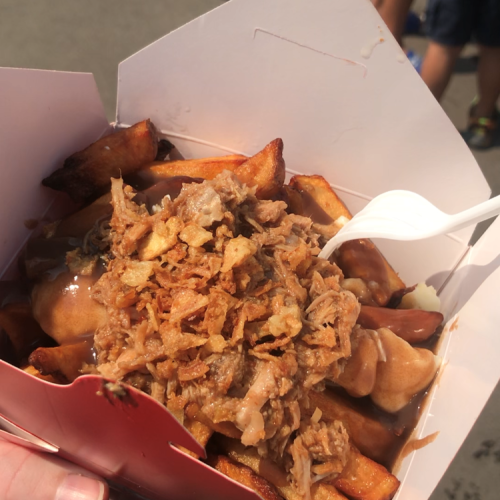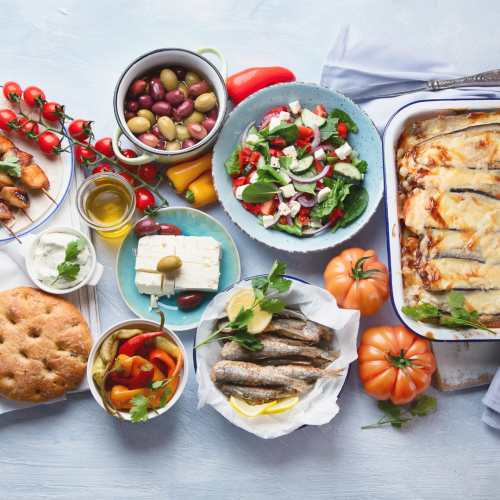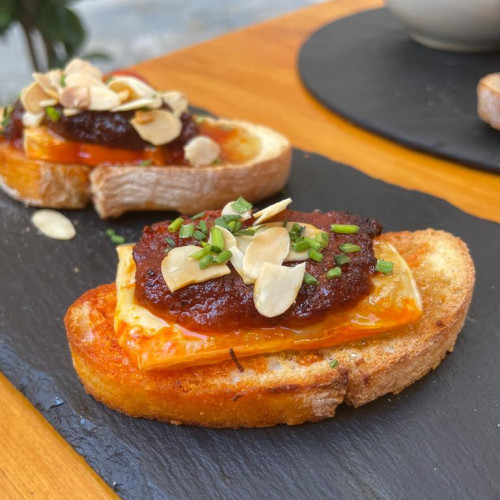Top Ten Food Waste Prevention Tips
According to the Food and Agriculture Organisation of the United Nations, over a third of all food goes to waste. To put this into perspective, that means:
1.3 billion tonnes of food wasted per year
£622 billion of food wasted per year
28% of agricultural land used to produce food which ends up as waste
1.4 billion hectares of agricultural land wasted
Food waste accounts for ¼ of all greenhouse gas emissions
If food waste were a country, it would be the 3rd largest emitter of greenhouse gas after the US and China
With thousands set to feel the pinch of rising energy costs as we head into colder months, reducing food waste is not only economical, but can also help reduce your environmental impact. We’ve put together our top 10 tips to help you cut down on food waste, whatever reason you’re doing it for.
Meal Plan and Prep
1. Meal Plan and Prep
Rather than wandering aimlessly through supermarkets and inevitably buying too much or too little, meal planning can be an easy way to drastically reduce food waste. Online shopping makes this easy, with less chance of being distracted by impulse purchase temptations. Meal planning also provides the perfect opportunity to prep meals in advance –ideal if you’ve got a busy week coming up.
Over 54% of Brits already meal prep on a regular basis according to Resource, but up to 33% of those meals are binned because people forget to eat them. Meal prep and planning go hand in hand to reduce food waste. Having a whiteboard or sheet of paper with the weekly meal plan on the fridge ensures everyone in the household knows what’s for dinner, eliminating the risk of forgetting a prepped meal.
2. Packed Lunches
As part of your meal planning, don’t forget to include lunches. Taking a packed lunch to work or school is a perfect opportunity to make sure leftovers are being eaten. If you have excess food that doesn’t fit into your plan, make a creative lunch with it. This also saves money by eliminating the temptation to buy lunch out.
3. FIFO
First In, First Out is a common practice in the hospitality industry. When sitting down to do your meal plan, check what’s already in your fridge. Work out what meals can be made with those ingredients, and schedule them for the beginning of the week so they’re used up before they spoil. If you buy more peppers, make sure you take the old ones out of the fridge to put at the front so they’ll be used first.
4. Upcycled and Ugly Food
Up to 40% of wasted fruit and veg was blamed on ‘ugly’ or ‘wonky’ produce, which doesn’t meet retailer standards according to The Independent, but still tastes delicious. Big chains such as Morrisons have recently started trying to combat this by creating their Wonderfully Wonky range of misshapen and blemished seasonal fruit and veg. Oddbox, Wonky Veg Boxed, The Wonky Food Co., and Earth and Wheat all specialise in making sure ugly food finds a home.
Upcycled food on the other hand, is food that people wouldn’t typically eat. Wize Tea, a Canadian based company, produce their tea using the discarded leaves of coffee plants, for example. By-products of traditional food products are often the source of upcycled food, and organisations like the Upcycled Food Association are helping organise brands in one place, and offer Upcycled certification if companies meet their criteria.
5. DIY Stocks and Broths
Speaking of food that wouldn’t typically be eaten – leftover vegetable peelings can be used to create veggie stock cubes. Simply add tops, bottoms, skins, and stems of sweet vegetables, such as corn, winter squash, courgette, beet greens, fennel, lettuce, parsnips, green beans, peppers, aubergines, mushrooms, asparagus, and herbs to a ziplock bag until full. When ready tip the bag into a saucepan, and fill ¾ with water until veggie scraps float. Bring to the boil, then simmer for 30 minutes. Strain the water out, then refrigerate the stock up to 4 days or freeze it up to 3 months!
Avoid sprouts, broccoli, and cauliflower, as these can give your stock a bitter aftertaste..
6. Freeze!
If fresh food in your meal plan won’t last until the day you have it scheduled for then freeze it! Many Brits aren’t sure which foods can be frozen, but the reality is almost anything can be. Dairy, meat, veggies, herbs, bread, pasta, and chocolate can all be easily preserved in the freezer. Even eggs can be frozen (except the shell). Simply crack them into a muffin tray and pop it in the freezer, or hard boil them and store in tupperware. Things like spring onions and red chillies are also ideal– simply dice them up and they’re ready to be scooped out and cooked straight from frozen. If you’re not sure whether something is suitable for home freezing, just look it up – it almost definitely will be!
Pickled Veggies
7. Ina bit of a pickle?
Another great way to preserve food is to pickle it. For a quick brine, use salt, and equal parts water and simple vinegar. White wine, apple cider, and rice vinegar all work well, but you should avoid balsamic or malt vinegar for pickling, according to Kitchn.
8. Understanding expiry dates
The European Commission estimates that as much of 10% of food waste is cause by confusion around food and drink expiry dates. The two most common types are ‘Use By’ and ‘Best Before’. While Use By dates are typically found on meat, fish, and ready meals and are important for food safety laws, Best Before dates are much more open to interpretation. The Best Before date is often far in advance of when an item actually spoils, and is used for baked goods, cheese, and fruit and veg. Tesco, Waitrose, and Marks and Spencer have all scrapped their Best Before dates for fresh produce, instead urging customers to use their own personal judgement to determine if food is safe, in an effort to reduce waste. Meanwhile, companies like Too Good To Go are working with businesses to offer discounted food that is close to expiring.
9. Community Fridges
In the absence of a customer version of Too Good To Go, people with excess food can donate to local community fridges. Hubbub currently have a network of over 300 fridges across the UK, and have partnered with the Co-op to fund another 500 by the end of2023. Not only does this reduce food waste, but it also enables food insecure households to access food. If there isn’t a community fridge near you, you could consider setting one up, or establishing a ‘swap shop’ style at your workplace. For example, excess home grown veggies could be brought in for colleagues to take home.
10. Compost
If all else fails, and there’s no other way for you to use up fresh food – or you simply missed the expiry date –there’s always composting to fall back on. In particular, fruit and veg are rich in nutrients, making the compost they produce excellent for fertilising plants – helping you grow your own food and further reducing food waste!












